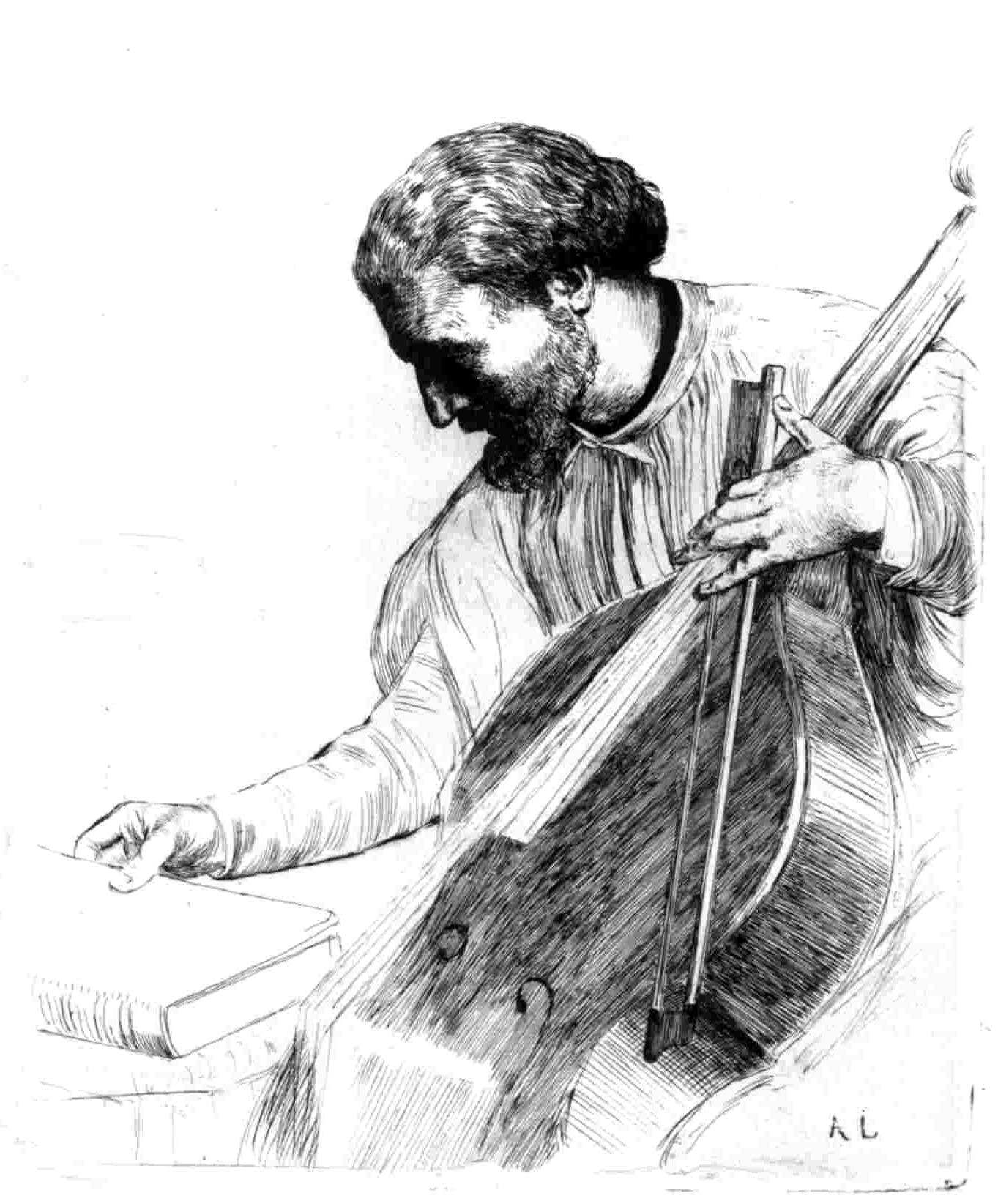Difficulties of Regulating the Orchestra
In Paris in 1768, the unfortunate custom prevailed among concertmasters of marking the beat by means of a long staff loudly striking the floor. Indeed, the opinion then prevailed that it was and would always be impossible to suppress this usage in large ensembles where many musicians had to be directed with a single stroke of the baton on the ground, according to some, that French ears, not being very sensitive, needed a "hard and striking clue". The philosopher Jean-Jacques Rousseau vented his annoyance about this insupportable way of regulating the orchestra: "One remarks that of all the orchestras of Europe, that of the Paris Opera, though one of the most numerous, causes the least effect. The reasons are easy to understand:... the insupportable noise of the time-stick, which covers and stifles all effects of the symphony." Elsewhere, foot-stamping or tapping the desk with a roll of paper, a stick or a bow to steady insecure ensembles was by no means rare. When in Naples in the 1830s, Berlioz reacted strongly against the disagreeable noise which the conductor made by striking his desk with the bow. He was subsequently assured that, left to their own devices, the individual members of the orchestra would find it difficult to keep time... The French conductor Edouard Deldevez also voiced his confusion about this noisy practice, although he felt that its suppression would be a certain recipe for disaster: "The barbarous usage of foot-stamping or desk-tapping with a bow to indicate for example an attack, is unfortunately the only way to get the necessary attention, chiefly in opera music. By which other means could one avoid complete disorder, steady a routed personnel, anticipate an impending cacophony or an abominable disaster ?" Until the 1820s, when Louis Spohr introduced the baton to England, there was no visible manner of giving the time at the London Philharmonic society orchestra. The first violin gave the tempi, and now and then, when the orchestra began to falter, gave the beat with the bow of his violin. For this reason, Louis Spohr felt that "so numerous an orchestra standing so far apart from each other as that of the Philharmonic, could not possibly go exactly together". To avoid confusion, then, the orchestra had to be regulated. As the concertmaster needed all the help he could get, the main burden of disciplining the orchestral forces and maintaining cohesion fell on the double bass. Leaning on the energetic, percussive tones of the instrument, playing articulated bow strokes, the double bassist established the tempo with a strong, consistent time. He was the core and backbone of the orchestra. Providing the basic impulse at all times, pounding out the notes at crucial moments, his function was to assist the musicians in maintaining perfect ensemble. Initiative and creativity held a premium. Constantly responding to what was going on around him, the double bassist possibly had the most freedom of anyone in the group, but he was under the pressure to make instant decisions when a disruption rippled through the orchestra. Pusillanimity, or simply indecisiveness, were out of the question. It was a daunting, exacting assignment. Among double bass players, Dragonetti in London and Marra in Naples were especially known for their formidable strength and stamina. Such was their stature that the solid, emphatic firmness of their powerful staccato allowed them to stabilize an errant orchestra and infuse a new spirit of life and enthusiasm into the performance by establishing confidence among musicians: "Towering there, in the limelight, at the corner of the orchestra, one hand on the neck of their gigantic instrument and the other holding the bow, they looked ten heads taller. The other instruments, violins, violas, cellos, brass and strings, woods and drums, all seemed to obey this bow as they would the sceptre of the King of Olympus." A man of untiring energy and initiative, Dragonetti embodied drive and determination. Reportedly, he elicited such a powerful tone from his "thundering double bass" that he routinely pulled a whole orchestra into line with one accent when they failed to maintain perfect ensemble. With this regard, Caffi informs us that his tone was so focused, so full, so transparent, that it could be produced by no other than him: one could always tell without even looking at the orchestra whether Dragonetti was there or not. The double bassist's main function was to energize the ensemble and help the concertmaster hold the group together. In this respect, maximum flexibility was required to avoid unnecessary tension. With such an overlapping division of authority, though, conflicts inevitably resulted when the two men did not get along. Indeed, when each tried to get his own way and struggled to gain control, their confrontation created further confusion in the orchestra. The Musical World for May 1837 gives us an interesting anecdote on Dragonetti taking charge of the orchestra in controversial circumstances, indirectly reflecting the notion that the double bass wielded too much power. There is no doubt in Cipriani Potter's mind, though, that on different occasions it was only the firm and timely intervention of Dragonetti that saved the day: "Although he has been accused of leading the orchestra, or in the estimation of some leaders, of mis-leading (for no man in that situation approves of public correction), it must be acknowledged that he has upon various occasions, by his promptitude and decision, brought back a whole band who 'like sheep had gone astray'." When large forces were employed, the basses were widely scattered so as to spin a dense web of sounds binding the orchestra together. Heard simultaneously from every direction, they distributed the harmonies and the beat throughout the orchestra. |